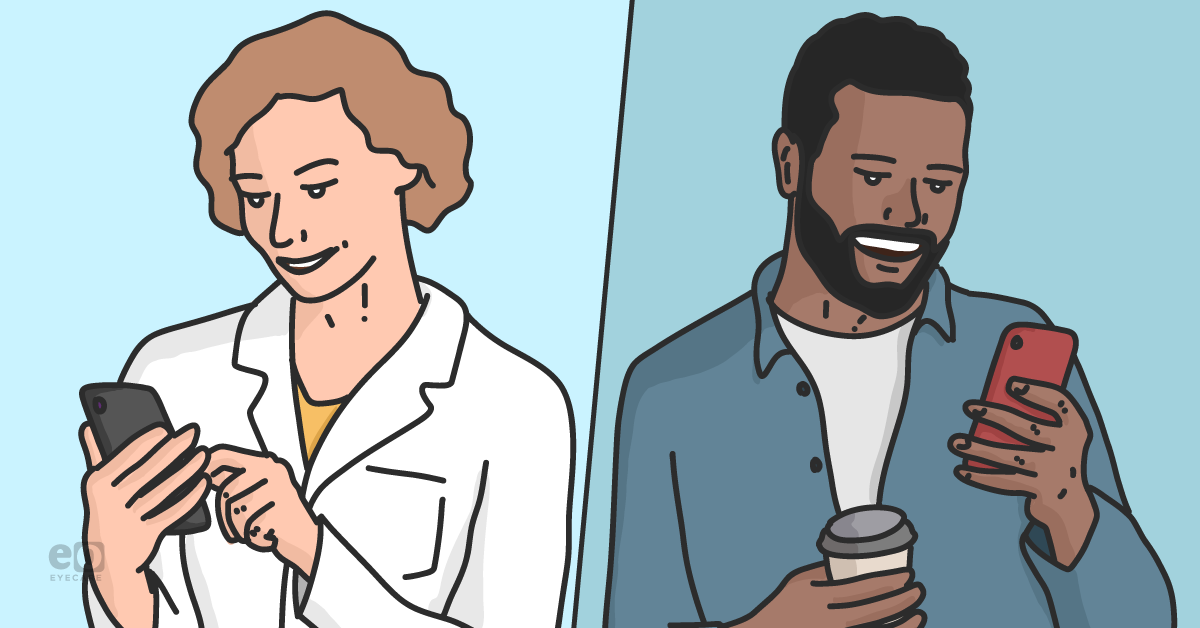When you look back at
being an optometrist as recently as 10 years ago, it’s remarkable to see how business systems have changed compared to those today.
I remember how we used to mail out recall cards to individuals when it was time for their yearly eye exam. I remember a time we called patients when their
glasses and/or contact lenses were in. I also remember when we used to give patients a reminder call, a few days before their appointment. And, who can forget how we used to be limited by the number of phone lines in our office and could only have a certain number of lines active at any given time?
And, most importantly, I remember the inefficiencies in those systems and the amount of time that it took individuals in our practice to make those calls. After working through many of these inefficiencies, I sometimes wonder how we did business under that set of circumstances. But we’re fortunate that now we’re in an era where everything has changed.
These days, many patients would prefer to receive a text message regarding updates on glasses,
contact lenses, and appointment reminders rather than a physical card in the mail or a phone call from our office. Thank goodness that contemporary messaging systems have given us the ability to seamlessly perform this task.
Advancements in optometry patient recall
When we think about traditional recall systems, in contrast to
modern recall systems, the process was relatively cumbersome. An individual would receive a postcard reminding them it is time to schedule their eye exam; many times these individuals would receive these recall cards after they came home from work, and they would have to remember to call the office the following day to schedule the appointment.
Through streamlined text messaging efforts, we can remind patients of their
yearly eye exams more efficiently. Text messages provide the patient an immediate way to respond to the office with either a text message or phone call back to the office. The time frame can be customized as well. Contemporary messaging systems provide two-way
communication with the patient. In other words, patients can schedule their appointments with text messages back and forth between the office.
One of the things we’ve always prided ourselves on in our office is
providing a high level of patient service. One of the ways we provided this service was by calling patients two days before their scheduled appointment to remind them. The challenge was confirming that the patients received the message. Often, we would have to leave a voicemail for the patient with no confirmation that they ever received the message.
New advanced software systems allow the ability to send reminder text messages to patients at any predetermined time point before those scheduled appointments. They also offer the ability for patients to respond back and confirm they received the reminder. These systems are so intelligent that they can even understand emojis as confirmation responses. As an example, if someone receives a message to confirm their appointment and the patient responds with a “thumbs up” emoji, the software will detect this as a confirmation notification.
Real-time notifications and no more phone line limitations
When glasses and contact lenses come into the office, patients need to be notified that they are in. This used to be a time-consuming process for someone in the practice. The contact lens order process has been streamlined through
direct-to-patient shipping or in-office inventories that can be dispensed to patients immediately after their visit.
Of course, some patients prefer to pick their contact lenses up in the office. For these patients, advanced software can now immediately notify the patient via text message when their glasses or contacts have arrived, right as the items are checked into the office. This provides an additional portal for
efficiencies within the practice without requiring the time to call these patients. Text messaging allows these individuals to respond immediately letting us know when they will be in the office to pick up the medical devices they’ve ordered.
Limitations with the number of phone lines that can either accept or call out of an office have also been negated by modern phone systems. Modern phone systems allow us to have as many phone lines as there are phones in the office. Thus, the number of calls in and out of the office is not limited by the number of phone lines that the office may have.
These same phone systems are so sophisticated that a patient can simply text the number of your office and you will receive those text messages. This allows patients to easily communicate with the office through a phone call or text message.
Technology to improve optometrist-patient communication
Communication technologies allow us to more strategically and efficiently reach out to our patients on their schedule and ours and give us the opportunity to interact with them in ways they’re used to being interacted with by friends and family. These new technologies allow us to personalize the experience for patients, giving them the opportunity to interact more conveniently with our office. In a service-oriented world, this gives your office the ability to provide services at a level that often times exceeds patients' expectations.
